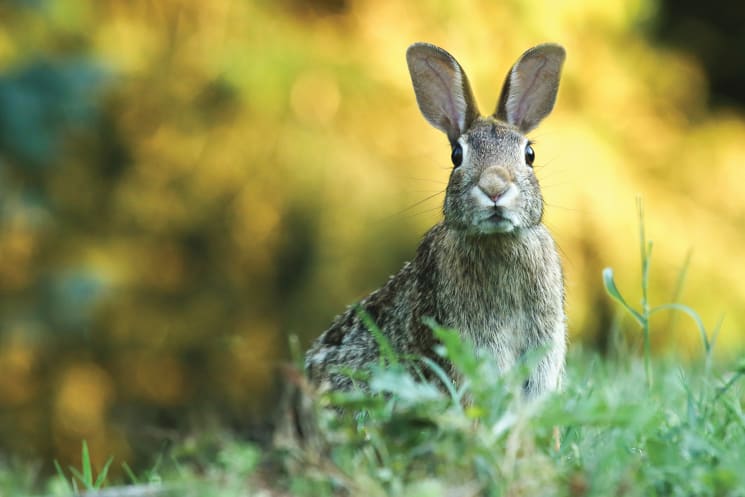
Landcare invasive species coordinator Aaron Stephens said rabbits were “the most destructive feral pest by a long way”, worse than foxes or cat. Photo: Gary Bendig, Unsplash.
With recent rabbit numbers on Phillip Island at their highest in years, experts have called on residents to take advantage of subsidised solutions, rather than taking matters into their own hands.
The call comes after social media comments saw people offer their own methods of rabbit eradication, while many suggested they were “adorable” and caused no harm.
Landcare invasive species coordinator Aaron Stephens said rabbits were “the most destructive feral pest by a long way”, worse than foxes or cat.
“Foxes and cats don’t remove an entire strata of vegetation. When rabbits are in an area it can become a dust bowl,” Aaron said, adding they spread weeds, over-nutrify the soil, dig warrens and cause “ecosystem collapse”.
He said multiple wet summers in a row had seen rabbit numbers increase, with rabbits able to breed every month and three generations possible in three months.
“It has been a dry January and February so that may reduce their numbers but if people water their lawns, for example, that can sustain the population.”
Aaron said the best way to reduce rabbit numbers was through fencing, with Landcare currently offering subsidies on labour and equipment for a year to homes and farms.
“The subsidy is up to 50 per cent off, so for instance if the landowner does the work themselves we can provide the fencing material free of charge.”
Landcare can also help with fumigation of warrens, traps and baiting.
He acknowledged some rabbits on the island clearly had signs of suffering myxomatosis, a cruel disease only released once in 1950 that sees a rabbit become blind.
“It lies dormant in the population and typically in summer when they’re vulnerable it will occur.”
Calicivirus kills about 40 to 90 per cent of rabbits infected with the virus, but “there’s no way to know the inherent immunity of the population”.
Surf Beach
Surf Beach and Sunderland Bay Coastcare and Landcare have rolled out a number of projects, aiming to reduce rabbit numbers.
Some residents have criticised the fencing and baiting at Surf Beach, describing it as a waste of money and “misguided”.
Resident Lou Pecora said rabbit traps and bait should have been installed instead of the “expensive” rabbit fence, which has been “a hindrance to the movement of wildlife, and has upset the community for visually vandalising the beautiful reserve”.
“I’m sure the general population would not think that the financial cost, damage to existing vegetation, visual impact, and disruption to wildlife movement is worth the effort,” Lou said.
Aaron said cages were being used as well as fencing to stop other animals eating bait, saying the project was about protecting the whole ecosystem of this section of coast.
“It’s not just about protecting one or two plants but protecting the whole coastal area,” Aaron said.
“Because it’s seen as a holiday destination, the environment is often an afterthought.
“If we allow rabbits as well as development we risk losing a whole ecosystem that has been there for millennia, so to be able to restore that conservation reserve to what it used to look like is a special thing.”





